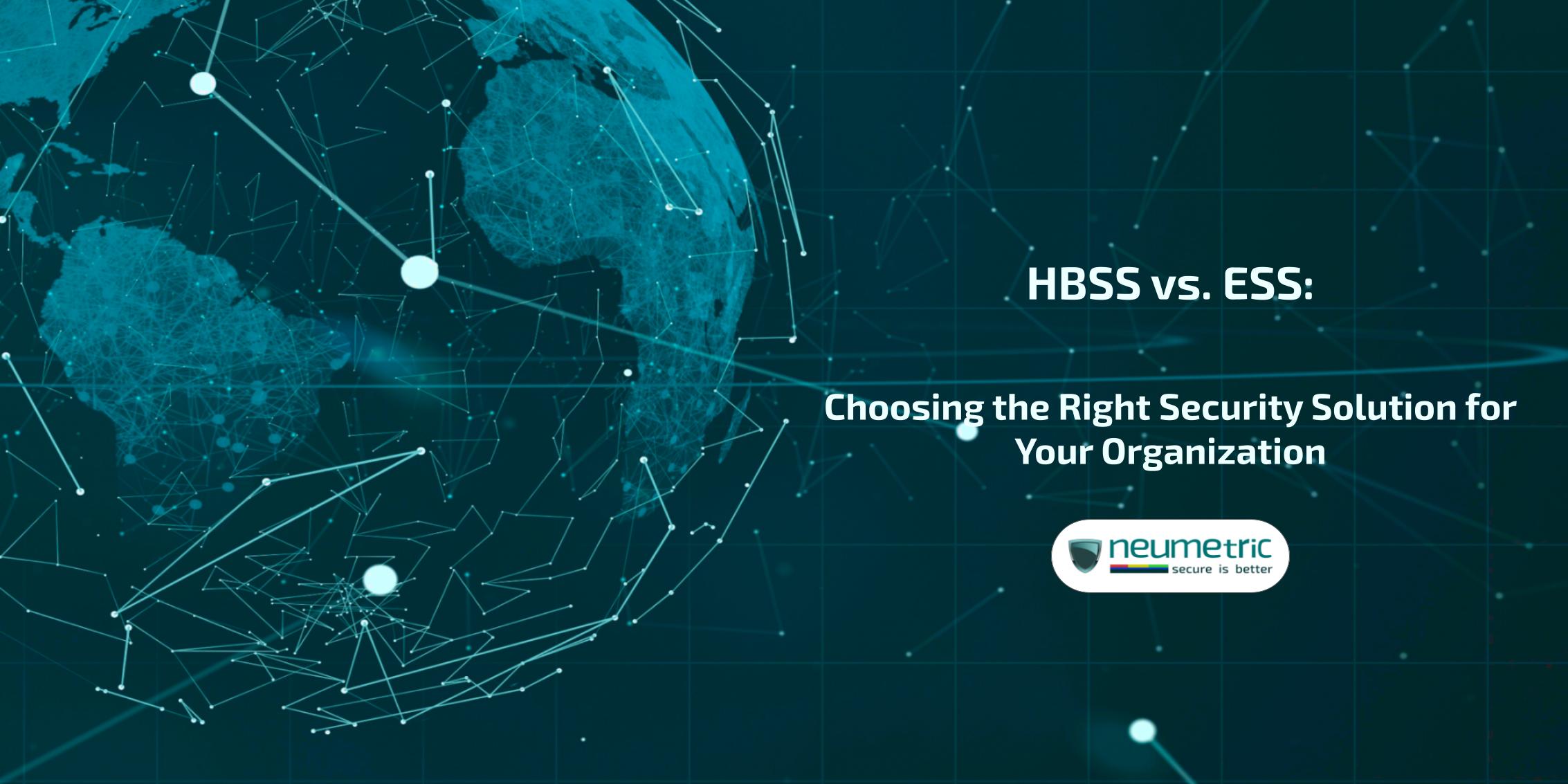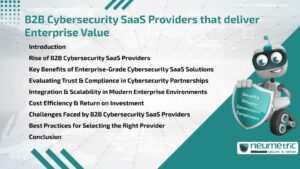Table of Contents
ToggleIntroduction to HBSS & ESS
In the ever-evolving world of cybersecurity, organizations are constantly seeking robust solutions to protect their digital assets. Two (2) prominent contenders in this space are Host-Based Security System [HBSS] & Enterprise Security System [ESS]. The debate of HBSS vs ESS has been a topic of much discussion among IT professionals & security experts.
HBSS, as the name suggests, is a security approach that focuses on protecting individual hosts or endpoints within a network. It operates at the device level, providing a layer of defense directly on each computer, server or mobile device. On the other hand, ESS takes a broader approach, offering a comprehensive security solution that encompasses the entire enterprise network.
As we delve deeper into the HBSS vs ESS comparison, it’s crucial to understand that both systems have their unique strengths & use cases. The choice between HBSS & ESS often depends on various factors, including the organization’s size, industry, specific security requirements & existing infrastructure.
Key Features of HBSS
Host-Based Security System [HBSS] is designed to provide robust protection at the individual device level. Let’s explore some of its key features:
Endpoint Protection
HBSS excels in safeguarding individual endpoints, such as desktops, laptops & servers. It acts as a personal bodyguard for each device, monitoring & defending against potential threats.
Real-time Monitoring
One of the strengths of HBSS is its ability to provide real-time monitoring of system activities. It continuously scans for suspicious behavior, unauthorized access attempts & potential malware infections.
Malware Detection & Removal
HBSS employs advanced malware detection techniques, including signature-based & behavior-based detection. It can identify & neutralize various types of malware, including viruses, trojans & ransomware.
Application Control
With HBSS, organizations can implement strict application control policies. This feature allows administrators to whitelist or blacklist specific applications, preventing the execution of unauthorized or potentially harmful software.
Host-based Firewall
Many HBSS solutions include a host-based firewall, providing an additional layer of protection by controlling inbound & outbound network traffic at the device level.
Data Loss Prevention [DLP]
HBSS often incorporates DLP features, helping organizations prevent sensitive data from leaving individual devices through unauthorized channels.
Patch Management
Some HBSS solutions offer patch management capabilities, ensuring that all protected devices are up-to-date with the latest security patches & updates.
Key Features of ESS
Enterprise Security System [ESS] takes a holistic approach to cybersecurity, offering a wide range of features designed to protect the entire organizational network. Here are some key features of ESS:
Network-wide Protection
Unlike HBSS, which focuses on individual devices, ESS provides comprehensive protection across the entire enterprise network, including servers, workstations & network devices.
Centralized Management
ESS offers a centralized management console, allowing security administrators to monitor, control & configure security policies across the entire organization from a single interface.
Advanced Threat Detection
ESS employs sophisticated threat detection mechanisms, including Machine Learning [ML] & Artificial Intelligence [AI], to identify & respond to complex & evolving cyber threats.
Network Traffic Analysis
A key feature of ESS is its ability to analyze network traffic patterns, identifying anomalies & potential security breaches in real-time.
Integration with SIEM
Many ESS solutions integrate seamlessly with Security Information & Event Management [SIEM] systems, providing enhanced visibility & correlation of security events across the organization.
Cloud Security
As organizations increasingly adopt cloud services, ESS solutions often include features specifically designed to protect cloud-based assets & ensure secure access to cloud resources.
Compliance Management
ESS typically includes tools & features to help organizations meet various regulatory compliance requirements, such as GDPR, HIPAA or PCI-DSS.
HBSS vs ESS: A Detailed Comparison
Now that we’ve explored the key features of both HBSS & ESS, let’s dive into a detailed comparison of these two security approaches. The HBSS vs ESS debate is multifaceted & understanding the nuances is crucial for making an informed decision.
Scope of Protection
- HBSS: Focuses on protecting individual endpoints, providing granular control & monitoring at the device level.
- ESS: Offers comprehensive protection across the entire enterprise network, including endpoints, servers & network infrastructure.
Deployment
- HBSS: Typically requires installation on each individual device, which can be time-consuming for large organizations.
- ESS: Usually deployed centrally, with agents or sensors distributed across the network as needed.
Management Complexity
- HBSS: Can be more complex to manage in large environments due to the need to configure & maintain security settings on each device.
- ESS: Often easier to manage at scale, thanks to centralized management consoles & policy deployment capabilities.
Resource Utilization
- HBSS: May impact individual device performance, especially during scans or updates.
- ESS: Generally has less impact on endpoint performance, as much of the processing is done at the network level.
Threat Intelligence
- HBSS: Often relies on local threat databases & may have limited ability to detect network-wide threats.
- ESS: Typically leverages global threat intelligence feeds & can correlate data across the entire network for better threat detection.
Visibility
- HBSS: Provides deep visibility into individual endpoint activities & behaviors.
- ESS: Offers broader visibility across the entire network, including traffic patterns & inter-device communications.
Scalability
- HBSS: Can be challenging to scale in rapidly growing organizations due to the need for individual device deployment.
- ESS: Generally more scalable, as it’s designed to protect enterprise-wide networks of varying sizes.
Offline Protection
- HBSS: Continues to protect devices even when they’re offline or disconnected from the corporate network.
- ESS: May have limited protection for devices that are not connected to the corporate network.
Pros & Cons of HBSS
As with any security solution, HBSS has its advantages & disadvantages. Let’s explore the pros & cons of HBSS to help you make an informed decision in the HBSS vs ESS debate.
Pros of HBSS
- Granular Control: HBSS provides detailed control over security settings at the individual device level, allowing for tailored protection.
- Offline Protection: Devices protected by HBSS continue to benefit from security measures even when disconnected from the corporate network.
- Deep Endpoint Visibility: HBSS offers in-depth insights into endpoint activities, helping to detect & respond to threats quickly.
- Resource Efficiency: In smaller networks, HBSS can be more resource-efficient as it doesn’t require extensive network infrastructure.
- Data Loss Prevention: Many HBSS solutions include robust DLP features to prevent data leakage from individual devices.
Cons of HBSS
- Management Complexity: In large environments, managing HBSS across numerous devices can become complex & time-consuming.
- Limited Network Visibility: HBSS may not provide comprehensive visibility into network-wide threats & traffic patterns.
- Potential Performance Impact: Intensive security operations like full system scans can impact individual device performance.
- Scalability Challenges: As organizations grow, deploying & maintaining HBSS on every new device can become challenging.
- Limited Cloud Protection: Some HBSS solutions may have limited capabilities when it comes to protecting cloud-based assets.
Pros & Cons of ESS
Enterprise Security System [ESS] also has its own set of advantages & disadvantages. Understanding these can help you make the right choice in the HBSS vs ESS comparison.
Pros of ESS
- Comprehensive Protection: ESS offers broad protection across the entire enterprise network, including endpoints, servers & network devices.
- Centralized Management: With ESS, administrators can manage security policies & respond to threats from a central console, simplifying operations.
- Advanced Threat Detection: ESS often incorporates AI & machine learning for more sophisticated threat detection & response.
- Scalability: ESS solutions are designed to scale with the organization, making them suitable for growing enterprises.
- Network-wide Visibility: ESS provides comprehensive visibility into network traffic & inter-device communications, aiding in threat detection.
Cons of ESS
- Higher Initial Cost: Implementing ESS can be more expensive upfront compared to HBSS, especially for smaller organizations.
- Complexity: The broad scope of ESS can make it more complex to configure & optimize for specific organizational needs.
- Potential Single Point of Failure: If the central ESS management system fails, it could impact security across the entire network.
- Limited Offline Protection: Devices may have reduced protection when disconnected from the corporate network.
- Possible Overkill for Small Organizations: For very small businesses, the comprehensive features of ESS might be more than necessary.
Factors to Consider When Choosing Between HBSS & ESS
When navigating the HBSS vs ESS decision, several factors come into play. Here are key considerations to help you choose the right security solution for your organization:
Organization Size & Structure
- Small to Medium-sized Businesses [SMBs]: HBSS might be more suitable due to its focus on endpoint protection & potentially lower complexity.
- Large Enterprises: ESS often provides the comprehensive protection & centralized management needed for complex, distributed networks.
Industry & Regulatory Requirements
Different industries have varying security requirements & compliance standards. ESS solutions often include more robust compliance management features, which can be crucial for heavily regulated industries like healthcare or finance.
Existing Infrastructure
Consider your current IT infrastructure:
- If you have a diverse range of endpoints & a complex network, ESS might be more suitable.
- For organizations with a more homogeneous environment, HBSS could provide adequate protection with less overhead.
Threat Landscape
Assess the specific threats your organization faces:
- If your primary concern is protecting individual devices from malware & data loss, HBSS might be sufficient.
- For protection against sophisticated, network-wide attacks, ESS offers more comprehensive capabilities.
Remote Work Considerations
With the rise of remote work:
- HBSS can provide strong protection for devices that are frequently used outside the corporate network.
- ESS, however, often offers better solutions for securing remote access & protecting cloud-based resources.
Budget & Resources
Consider both the initial investment & long-term costs:
- HBSS might have lower upfront costs but could be more resource-intensive to manage at scale.
- ESS typically requires a higher initial investment but may offer better long-term value for growing organizations.
Scalability Needs
Think about your organization’s growth trajectory:
- If rapid expansion is expected, ESS’s centralized management & scalability might be advantageous.
- For organizations with stable size & structure, HBSS could provide adequate protection without unnecessary complexity.
Integration Requirements
Consider how the security solution will integrate with your existing tools:
- ESS often offers broader integration capabilities with other enterprise systems like SIEM or IAM solutions.
- HBSS might be sufficient if your integration needs are primarily at the endpoint level.
By carefully evaluating these factors in the context of your organization’s specific needs, you can make a more informed decision in the HBSS vs ESS debate.
Implementation Challenges & Best Practices
Implementing either HBSS or ESS comes with its own set of challenges. Here are some common hurdles & best practices to overcome them:
Challenges:
- User Resistance: Employees may resist new security measures that they perceive as disruptive.
- Performance Concerns: Improperly configured security solutions can impact system performance.
- False Positives: Overly sensitive settings can lead to a high number of false alarms.
- Integration Issues: Difficulties in integrating the new security solution with existing systems.
- Skill Gap: Lack of in-house expertise to manage complex security systems.
Best Practices:
- Phased Implementation: Roll out the new system in stages to minimize disruption & allow for adjustments.
- Comprehensive Training: Provide thorough training for both IT staff & end-users to ensure smooth adoption.
- Regular Updates: Keep the system updated with the latest threat intelligence & security patches.
- Continuous Monitoring: Regularly review & adjust security policies based on observed patterns & emerging threats.
- Engage Stakeholders: Involve key stakeholders from various departments in the planning & implementation process.
- Document Processes: Create clear documentation for security procedures & incident response plans.
- Conduct Regular Audits: Perform periodic security audits to identify & address any vulnerabilities or misconfigurations.
By following these best practices, organizations can mitigate many of the common challenges associated with implementing new security solutions, whether choosing HBSS or ESS.
Conclusion
The debate between HBSS vs ESS is not about finding a one-size-fits-all solution, but rather about identifying the best fit for your organization’s unique needs. Both HBSS & ESS offer robust security features, each with its own strengths & limitations.
HBSS shines in environments where granular control over individual endpoints is paramount. It’s often a good fit for smaller organizations or those with specific device-level security requirements. The ability to protect devices even when they’re offline is a significant advantage in today’s mobile-first world.
On the other hand, ESS provides a comprehensive, network-wide security solution that’s often better suited for larger enterprises or organizations with complex IT infrastructures. Its centralized management & advanced threat detection capabilities make it a powerful tool for protecting against sophisticated, multi-vector attacks.
Ultimately, the choice between HBSS vs ESS should be based on a careful assessment of your organization’s size, industry, regulatory requirements, existing infrastructure & future growth plans. In some cases, a hybrid approach combining elements of both HBSS & ESS might be the optimal solution.
Remember, cybersecurity is not a one-time decision but an ongoing process. Whichever solution you choose, it’s crucial to regularly review & update your security strategies to stay ahead of evolving threats. By making an informed decision in the HBSS vs ESS debate, you’re taking a significant step towards building a robust & resilient security posture for your organization.
Key Takeaways
- HBSS focuses on protecting individual endpoints, while ESS provides comprehensive, network-wide security.
- HBSS offers granular control & strong offline protection but can be challenging to manage at scale.
- ESS provides centralized management & advanced threat detection but may have higher upfront costs.
- The choice between HBSS vs ESS depends on factors like organization size, industry, regulatory requirements & existing infrastructure.
- Both HBSS & ESS have their strengths & limitations; the best choice depends on your organization’s specific needs.
- Implementation challenges can be mitigated through best practices like phased rollout, comprehensive training & continuous monitoring.
- Some organizations might benefit from a hybrid approach, combining elements of both HBSS & ESS.
- Regularly reviewing & updating your security strategy is crucial, regardless of whether you choose HBSS or ESS.
Frequently Asked Questions [FAQ]
What is the main difference between HBSS & ESS?
The main difference lies in their scope of protection. Host-Based Security System [HBSS] focuses on protecting individual endpoints or devices, while Enterprise Security System [ESS] provides comprehensive protection across the entire enterprise network.
Is HBSS or ESS better for small businesses?
Generally, HBSS might be more suitable for small businesses due to its focus on endpoint protection & potentially lower complexity. However, the best choice depends on the specific needs & infrastructure of the business.
Can HBSS & ESS be used together?
Yes, some organizations opt for a hybrid approach, combining elements of both HBSS & ESS to create a more comprehensive security strategy tailored to their specific needs.
How does cloud computing impact the choice between HBSS & ESS?
Cloud computing often favors ESS solutions, as they typically offer better integration with cloud services & more comprehensive protection for distributed networks. However, some HBSS solutions are evolving to better support cloud environments.
What are the cost implications of choosing HBSS vs ESS?
HBSS often has lower upfront costs but can be more resource-intensive to manage at scale. ESS typically requires a higher initial investment but may offer better long-term value for growing organizations. The total cost of ownership should be considered when making a decision.





